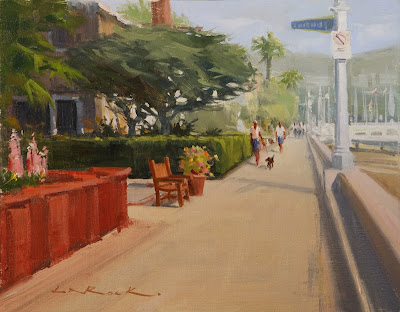
Just finished up another 3-day workshop last weekend. I thank all those who attended. As I was thinking about all the topics we covered, one that stands out in my mind is the 80/20 rule: 80 percent of a painting is unimportant and 20 percent is. It’s not to say that the 80 percent doesn’t matter, quite the contrary. This large portion is the foundation of a painting, your supporting cast that backs up the focal points and main interest. We can’t have every element matter, some areas are quiet and others command attention. By following this rule, I find that I can keep my paintings from “getting away from me”, with too much detail or being overly busy.
In “Fish Stories”, the painting above, that was my goal. Only the main white areas of the boat matter. Everything else was minimized by painting the values close and the edges soft. This large dark mass supports my focus, yet if you look close there is plenty going on, it just doesn’t overstate my main interest.
I’ve always enjoyed paintings that reward you upon closer inspection. When you first see this painting, you only see the boat, but when you look into it further, then you see the guys working, the ropes and junk that make up a fishing dock. Just like a free dessert, unexpected but always welcomed! Enjoy.










